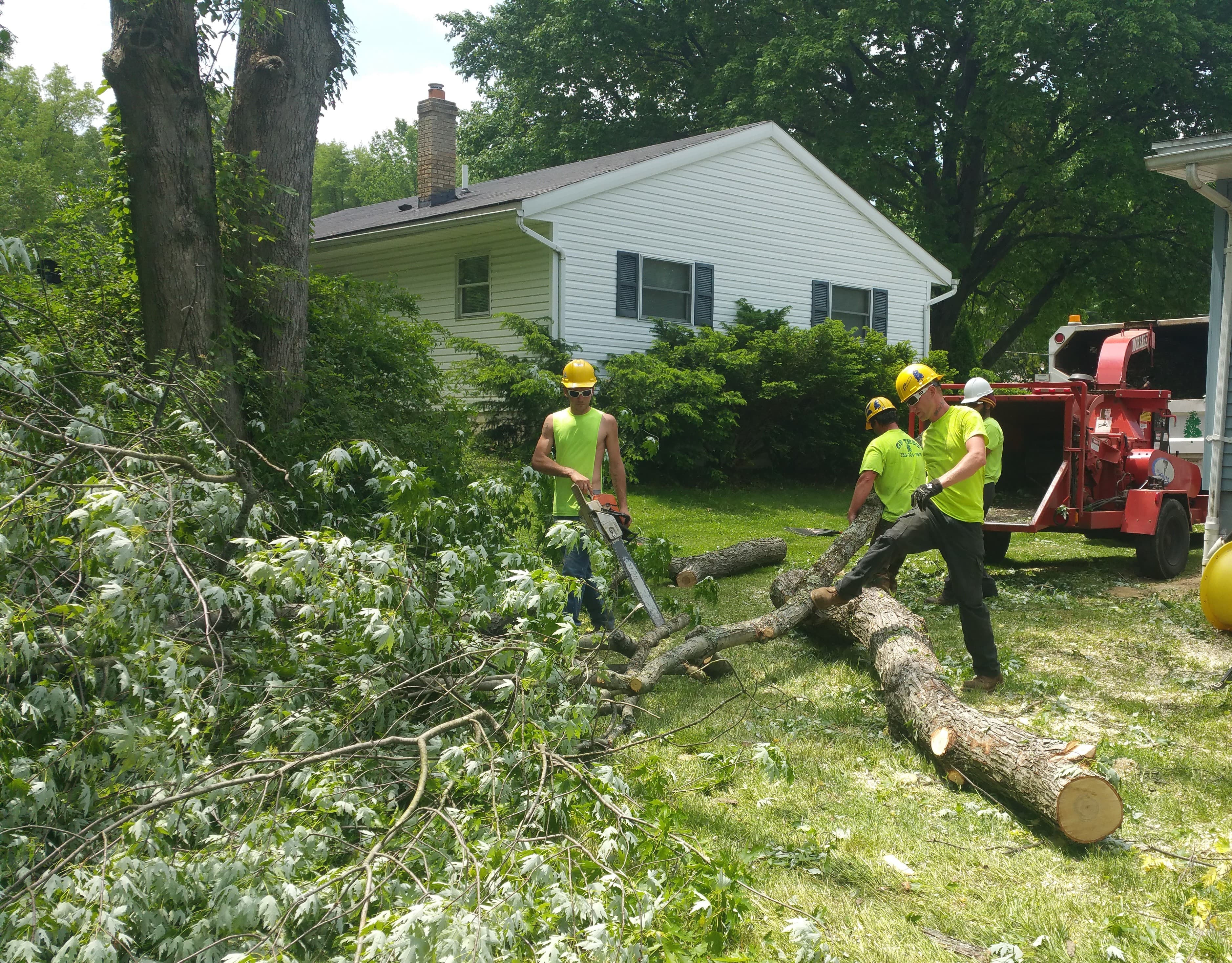If you are like most homeowners, you are looking for a simple way to ensure your trees are ready for upcoming winter weather. A Northeast Ohio winter can be harsh and unpredictable, so it’s important to take steps to put your trees in the best condition to weather the cold and emerge strong in the spring.
At GP Tree, we suggest a simple checklist for your trees as late summer moves into early fall:
- Moisture maintenance
- Fall feeding
- Pest prevention
- Professional pruning
The trees living on your property, whether you reside in the suburbs or your community is more rural, will always need a bit of attention as the weather begins to cool, including regular water, a boost of nutrients, and help resisting insects.
Moisture maintenance
Mature trees are generally self-sufficient when it comes to watering, but coming off a hot, dry summer, it can’t hurt to set your sprinkler for a bit of deep watering before the ground freezes. For young trees and those still less than two years old, regular watering can be critical. Be sure to focus on the root spread, not just the base of the tree. Contact the GP Tree team for more information about watering your young trees.
Incidentally, fall is an ideal time to plant trees to allow them ample time to get established and a dormant season to get strong for spring growth. Your GP Tree expert can help you with proper planting techniques, appropriate feeding for fall, and a watering schedule to get your new tree safely into winter.
Fall feeding
A quality tree fertilizer is essential to provide both young and mature trees with the nutrients needed to get through the winter but be sure to consult your arborist first. A standard fertilizer in the late summer or early fall can encourage new growth that will not be able to withstand cold winter temperatures, ultimately weakening your tree. The experts at GP Tree can provide details on appropriate fall feeding for your trees.
Pest prevention
Urban and suburban trees can be especially vulnerable to disease and insect infestation. Take time to inspect your trees during the late summer and early fall to look for signs of trouble, such as wilted or spotted leaves, leaves that are changing color and falling earlier than normal, dead limbs, peeling or weeping bark, and signs of insects nesting on the limbs, trunk, or at the base of the tree. Your GP Tree team is always available to inspect trees that you may have questions or concerns about and advise you as to treatment to save your tree.
Professional pruning
For safety and the health of your trees, dead and dying branches should be removed as soon as they are noticed. Entering the winter months, it is critical to remove weakened branches that could be brought down due to wind, ice, or heavy snow, but consulting your tree specialist is always a good idea, especially if branches are large or difficult to reach. At GP Tree, we provide pruning and crane service as needed to safely remove branches that could be hazardous.
If your tree needs significant pruning or shaping, contact GP Tree. Extensive pruning should be done during dormant season and should always be left to professionals to ensure the best possible result for your trees.
If you need advice on care and pruning for your trees, contact GP Tree today for professional service this fall that will keep your trees healthy this winter and ready for spring growth.

